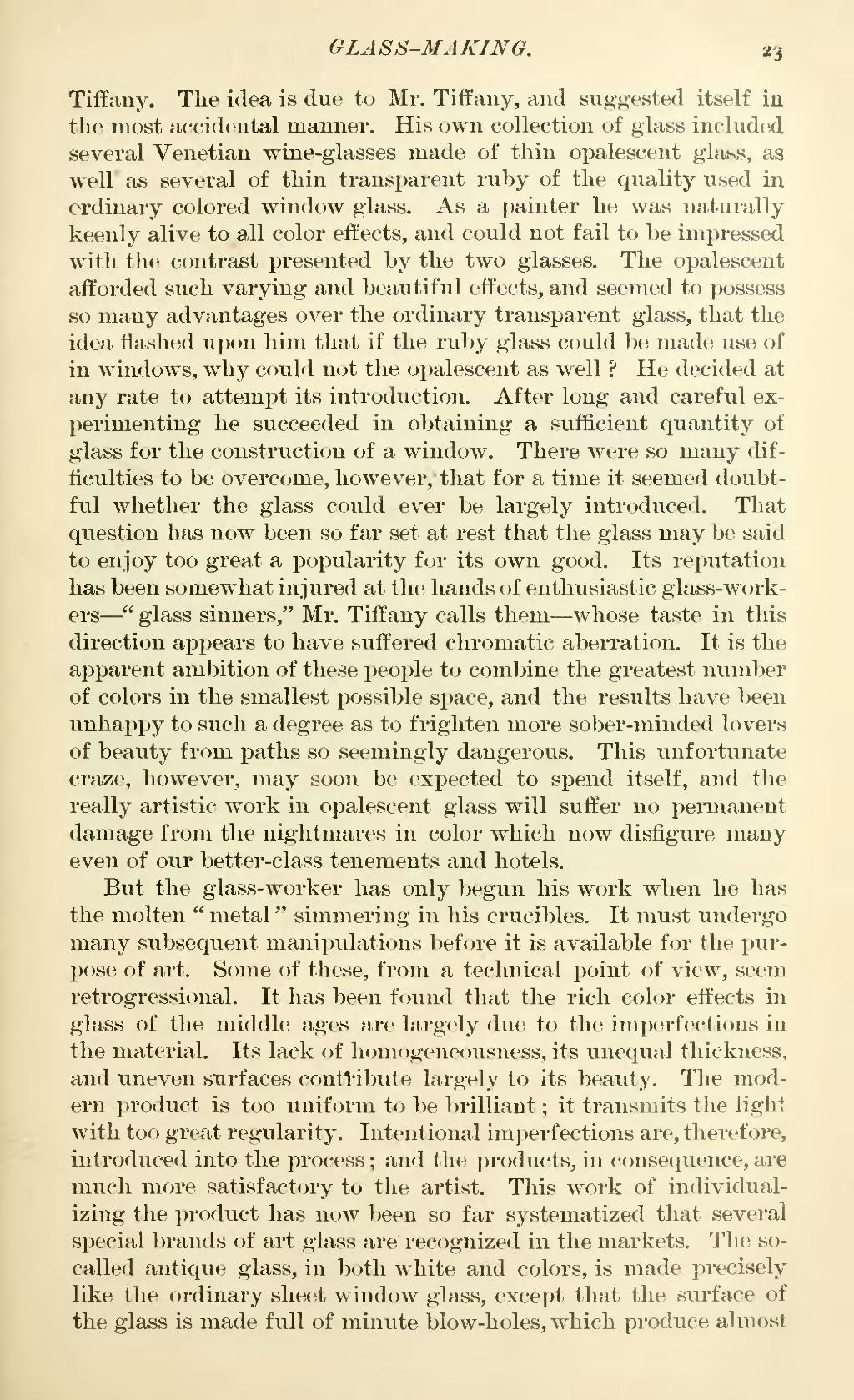Tiffany. The idea is due to Mr. Tiffany, and suggested itself in the most accidental manner. His own collection of glass included several Venetian wine-glasses made of thin opalescent glass, as well as several of thin transparent ruby of the quality used in ordinary colored window glass. As a painter he was naturally keenly alive to all color effects, and could not fail to be impressed with the contrast presented by the two glasses. The opalescent afforded such varying and beautiful effects, and seemed to possess so many advantages over the ordinary transparent glass, that the idea flashed upon him that if the ruby glass could be made use of in windows, why could not the opalescent as well? He decided at any rate to attempt its introduction. After long and careful experimenting he succeeded in obtaining a sufficient quantity of glass for the construction of a window. There were so many difficulties to be overcome, however, that for a time it seemed doubtful whether the glass could ever be largely introduced. That question has now been so far set at rest that the glass may be said to enjoy too great a popularity for its own good. Its reputation has been somewhat injured at the hands of enthusiastic glass-workers—"glass sinners," Mr. Tiffany calls them—whose taste in this direction appears to have suffered chromatic aberration. It is the apparent ambition of these people to combine the greatest number of colors in the smallest possible space, and the results have been unhappy to such a degree as to frighten more sober-minded lovers of beauty from paths so seemingly dangerous. This unfortunate craze, however, may soon be expected to spend itself, and the really artistic work in opalescent glass will suffer no permanent damage from the nightmares in color which now disfigure many even of our better-class tenements and hotels.
But the glass-worker has only begun his work when he has the molten "metal" simmering in his crucibles. It must undergo many subsequent manipulations before it is available for the purpose of art. Some of these, from a technical point of view, seem retrogressional. It has been found that the rich color effects in glass of the middle ages are largely due to the imperfections in the material. Its lack of homogeneousness, its unequal thickness, and uneven surfaces contribute largely to its beauty. The modern product is too uniform to be brilliant; it transmits the light with too great regularity. Intentional imperfections are, therefore, introduced into the process; and the products, in consequence, are much more satisfactory to the artist. This work of individualizing the product has now been so far systematized that several special brands of art glass are' recognized in the markets. The so called antique glass, in both white and colors, is made precisely like the ordinary sheet window glass, except that the surface of the glass is made full of minute blow-holes, which produce almost
